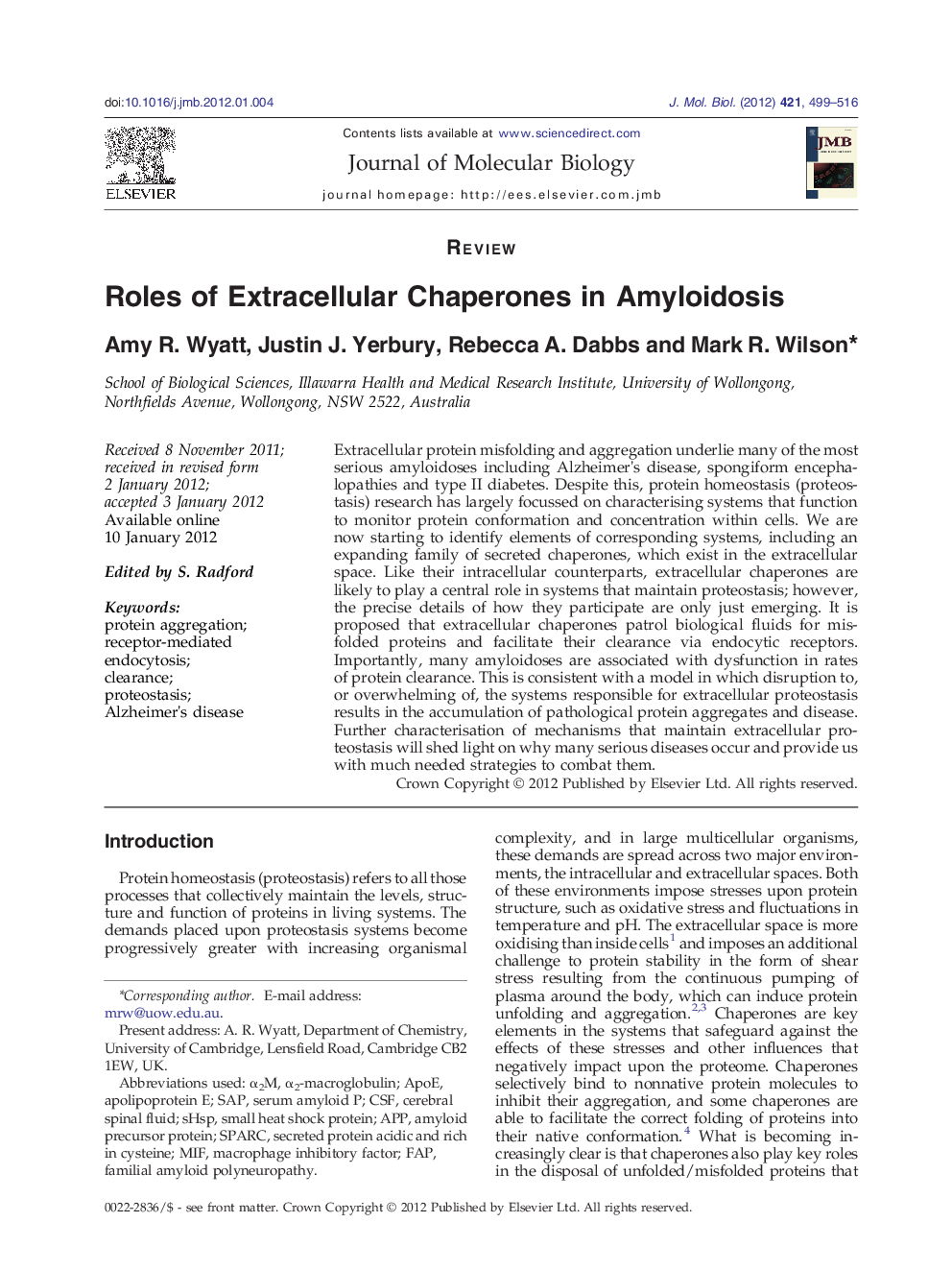| Article ID | Journal | Published Year | Pages | File Type |
|---|---|---|---|---|
| 2184916 | Journal of Molecular Biology | 2012 | 18 Pages |
Extracellular protein misfolding and aggregation underlie many of the most serious amyloidoses including Alzheimer's disease, spongiform encephalopathies and type II diabetes. Despite this, protein homeostasis (proteostasis) research has largely focussed on characterising systems that function to monitor protein conformation and concentration within cells. We are now starting to identify elements of corresponding systems, including an expanding family of secreted chaperones, which exist in the extracellular space. Like their intracellular counterparts, extracellular chaperones are likely to play a central role in systems that maintain proteostasis; however, the precise details of how they participate are only just emerging. It is proposed that extracellular chaperones patrol biological fluids for misfolded proteins and facilitate their clearance via endocytic receptors. Importantly, many amyloidoses are associated with dysfunction in rates of protein clearance. This is consistent with a model in which disruption to, or overwhelming of, the systems responsible for extracellular proteostasis results in the accumulation of pathological protein aggregates and disease. Further characterisation of mechanisms that maintain extracellular proteostasis will shed light on why many serious diseases occur and provide us with much needed strategies to combat them.
Graphical AbstractFigure optionsDownload full-size imageDownload high-quality image (210 K)Download as PowerPoint slide
